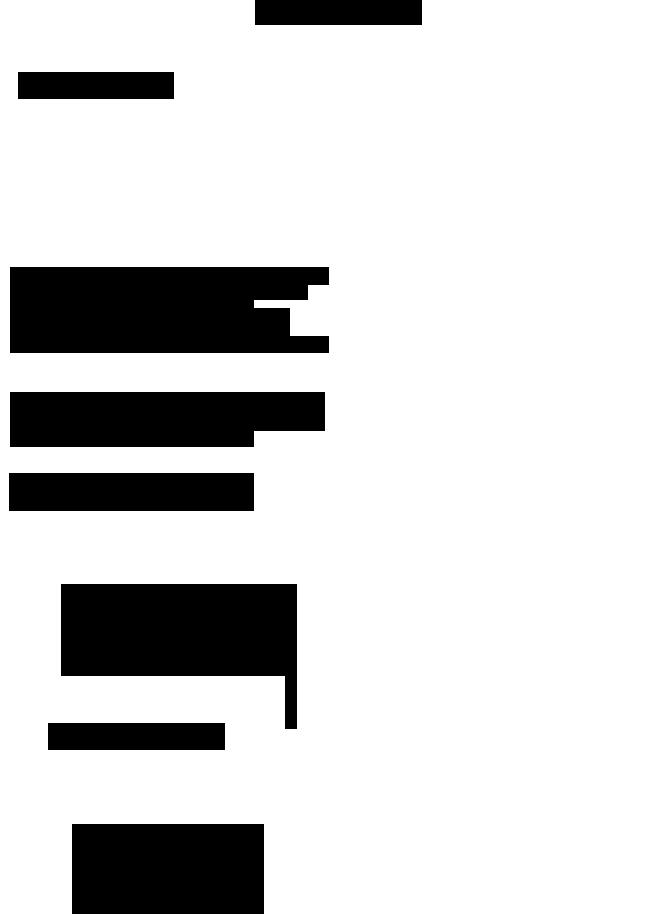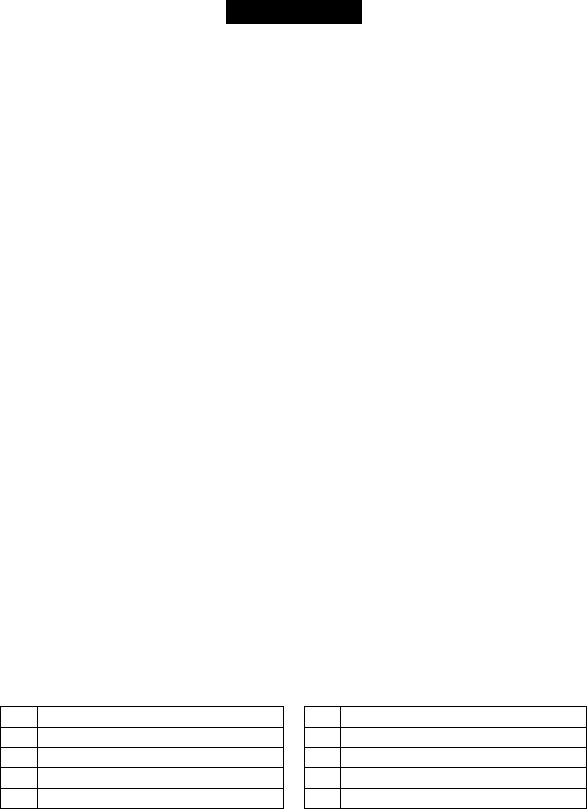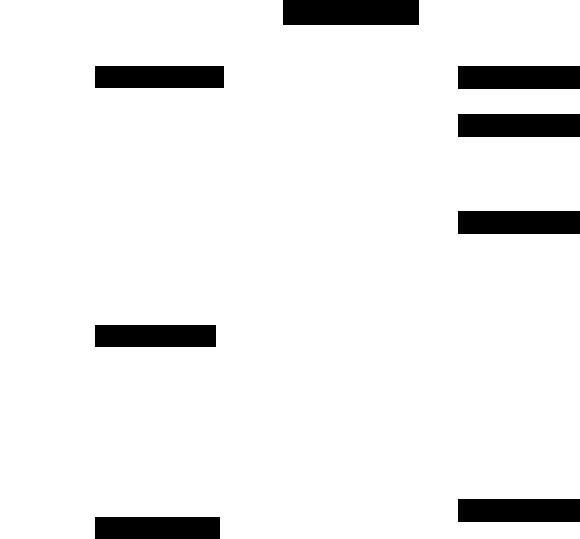Craftsman 247.28919 User Manual [en, es]

Operator’s Manual
LAWN TRACTOR
20 HP, Variation Speed
42” Deck
Model No. 247.28919
• Espanoi, P. 59
This product has a low emission engine which operates differently from previously built engines. Before you start the engine, read and understand this Operator’s Manual.
A CAUTION Before using this equipment, read this manual and follow
all safety rules and operating instructions.
For answers to your questions about this product, Call:
1-800-659-5917
Craftsman Tractor Help Line
7 am - 7 pm CT, Mon. - Sun.
Sears Brands Management Corporation, Hoffman Estates, IL 60179 U.S.A.
Visit our website: www.craftsman.com |
Form No. 769-05815A |
|
|
|
(February 12,2010) |

TABLE OF CONTENTS
Warranty Statement......................................................... |
2 |
Off-Season Storage....................................................... |
27 |
Safety Instructions............................................................ |
3 |
Troubieshooting.............................................................. |
28 |
Slope Gauge.................................................................... |
8 |
Labeis............................................................................. |
29 |
Safety Labels.................................................................... |
9 |
Parts List........................................................................ |
30 |
Assembly........................................................................ |
10 |
Españoi.......................................................................... |
59 |
Operation........................................................................ |
12 |
Service Numbers.............................................. |
Back Cover |
Service and Maintenance ............................................... |
18 |
|
|
WARRANTY STATEMENT
J
CRAFTSMAN FULL WARRANTY
When operated and maintained according to all supplied instructions, if any non-expendable part of this riding equipment fails due to a defect in material or workmanship within two years from the date or purchase, call 1-800-659-5917 to arrange for free in-home repair.
The frame and front axle will be repaired free of charge for five years from the date of purchase it defective in material or workmanship.
Ail of the above warranty coverage applies for only 90 days from the date of purchase it this riding equipment is ever used for commercial or rental purposes.
In all cases, it repair proves impossible, the riding equipment will be replaced free of charge with the same or an equivalent model.
The battery will be replaced free of charge for 90 days from the date of purchase it defective in material or workmanship (our testing proves that it will not hold a charge).
This warranty covers ONLY defects in material and workmanship. Sears will NOT pay for:
•Expendable items that become worn during normal use, including but not limited to blades, spark plugs, air cleaners, belts, and oil filters.
•Standard maintenance servicing,oil changes, or tune-ups.
•Tire replacement or repair caused by punctures from outside objects, such as nails, thorns, stumps, or glass.
•Tire or wheel replacement or repair resulting from normal wear, accident, or improper operation or maintenance.
•Repairs necessary because of operator abuse, including but not limited to damage caused by towing objects beyond the capability of the riding equipment, impacting objects that bend the frame or crankshaft, or over-speeding the engine.
•Repairs necessary because of operator negligence, including but not limited to, electrical and mechanical damage caused by improper storage, failure to use the proper grade and amount of engine oil, failure to keep the deck clear of flammable debris, or failure to maintain the riding equipment according to the instructions contained in the operator's manual.
•Engine (fuel system) cleaning or repairs caused byfuel determined to be contaminated or oxidized (stale). In general, fuel should be used within 30 days of its purchase date.
•Normal deterioration and wear of the exterior finishes, or product label replacement.
This warranty applies only while this product is within the United States.
This warranty gives you specific legal rights, and you may also have other rights which vary from state to state.
Sears Brands Management Corporation, Hoffman Estates, IL 60179
PRODUCT SPECIFICATIONS
Gross HP: |
20 |
Engine Oil: |
SAE 30 |
Fuel: |
Unleaded Gasoline |
Spark Plug: |
Champion® RC12YC |
Engine: |
Briggs & Stratton Intek® |
|
|
MODEL NUMBER
Model Number:__
Serial Number:__
Date of Purchase:
Record the modei number, serial number, and date of purchase above.
§KCDIRLLC

SAFETY INSTRUCTIONS
J
AWARNING |
|
A DANGER |
This symbol points out important safety instructions which, it not followed, could endanger the personal safety and/or property of yourself and others. Read and follow all instructions in this manual before attempting to operate this machine. Failure to comply with these instructions may result in personal injury. When you see this symbol, HEED ITS WARNING!
This machine was built to be operated according to the safe opera tion practices in this manual. As with any type of power equipment, carelessness or error on the part of the operator can result in serious injury. This machine is capable of amputating fingers, hands, toes and feet and throwing debris. Failure to observe the following safety instructions could result in serious injury or death.
AWARNING
CALIFORNIA PROPOSITION 65
Engine Exhaust, some of its constituents, and certain vehicle components contain or emit chemicals known to State of California to cause cancer and birth defects or other reproductive harm. Battery posts, terminals, and related accessories contain lead and lead compounds, chemicals known to the State of California to cause cancer and reproductive harm. Wash hands after handling.
GENERAL OPERATION
•Read, understand, and follow all instructions on the machine and in the manual(s) before attempting to assemble and operate. Keep this manual in a safe place for future and regular reference and for ordering replacement parts.
•Be familiar with all controls and their proper operation. Know how to stop the machine and disengage them quickly.
•Never allow children under 14 years old to operate this machine. Children 14 years old and over should read and understand the operation instructions and safety rules in this manual and should be trained and supervised by a parent.
•Never allow adults to operate this machine without proper instruction.
•To help avoid blade contact or a thrown object injury, keep bystanders, helpers, children and pets at least 75 feet from the machine while it is in operation. Stop machine it anyone enters the area.
•Thoroughly inspect the area where the equipment is to be used. Remove all stones, sticks, wire, bones, toys, and other foreign objects which could be picked up and thrown by the blade(s). Thrown objects can cause serious personal injury.
•Plan your mowing pattern to avoid discharge of material toward roads, sidewalks, bystanders and the like. Also, avoid discharg ing material against a wall or obstruction which may cause discharged material to ricochet back toward the operator.
AWARNING
Your Responsibility—Restrict the use of this power machine to persons who read, understand and follow the warnings and instruc tions in this manual and on the machine.
SAVE THESE INSTRUCTIONS!
Always wear safety glasses or safety goggles during operation and while performing an adjustment or repair to protect your eyes. Thrown objects which ricochet can cause serious injury to the eyes.
Wear sturdy, rough-soled work shoes and close-fitting slacks and shirts. Loose fitting clothes and jewelry can be caught in movable parts. Never operate this machine in bare feet or sandals.
Be aware of the mower and attachment discharge direction and do not point it at anyone. Do not operate the mower without the discharge cover or entire grass catcher in its proper place.
Do not put hands or feet near rotating parts or under the cutting deck. Contact with the blade(s) can amputate hands and feet. A missing or damaged discharge cover can cause blade contact or thrown object injuries.
Stop the blade(s) when crossing gravel drives, walks, or roads and while not cutting grass.
Watch tor traffic when operating near or crossing roadways. This machine is not intended for use on any public roadway.
Do not operate the machine while under the influence of alcohol or drugs.
Mow only In daylight or good artificial light. Never carry passengers.
Disengage blade(s) before shifting into reverse. Back up slowly. Always look down and behind before and while backing to avoid a back-over accident.

SAFETY INSTRUCTION
I
Slow down before turning. Operate the machine smoothly. Avoid erratic operation and excessive speed.
Disengage blade(s), set parking brake, stop engine and wait until the blade(s) come to a complete stop before removing grass catcher, emptying grass, unclogging chute, removing any grass or debris, or making any adjustments.
Never leave a running machine unattended. Always turn off blade(s), set parking brake, stop engine and remove key before dismounting.
Use extra care when loading or unloading the machine into a trailer or truck. This machine should not be driven up or down ramp(s), because the machine could tip over, causing serious personal injury. The machine must be pushed manually on ramp(s) to load or unload properly.
Muffler and engine become hot and can cause a burn. Do not touch.
Check overhead clearances carefully before driving under low hanging tree branches, wires, door openings etc., where the operator may be struck or pulled from the machine, which could result in serious injury.
Disengage all attachment clutches and depress the brake pedal completely before attempting to start engine.
Your machine is designed to cut normal residential grass of a height no more than 10”. Do not attempt to mow through unusually tall, dry grass (e.g., pasture) or piles of dry leaves. Dry grass or leaves may contact the engine exhaust and/or build up on the mower deck presenting a potential fire hazard.
Use only accessories and attachments approved for this machine by the machine manufacturer. Read, understand and follow all instructions provided with the approved accessory or attachment. Fora list of approved accessories and attachments, call 1-800 659-5917.
Data indicates that operators, age 60 years and above, are involved in a large percentage of riding mower-related injuries. These operators should evaluate their ability to operate the riding mower safely enough to protect themselves and others from serious injury.
If situations occur which are not covered in this manual, use care and good judgment. Contact 1-800-659-5917 for information and assistance.
SLOPE OPERATION
Slopes are a major factor related to loss of control and tip-over accidents which can result in severe injury or death. All slopes require extra caution. If you cannot back up the slope or it you feel uneasy on it, do not mow it.
For your safety, use the Slope Guide included as part of this manual to measure slopes before operating this machine on a sloped or hilly area. If the slope is greater than 15 degrees as shown on the Slope Guide, do not operate this machine on that area or serious injury could result.
Do:
•Mow up and down slopes, not across. Exercise extreme caution when changing direction on slopes.
•Watch tor holes, ruts, bumps, rocks, or other hidden objects. Uneven terrain could overturn the machine. Tall grass can hide obstacles.
•Use slow speed. Choose a low enough speed setting so that you will not have to stop or shift while on the slope. Tires may lose traction on slopes even though the brakes are functioning properly. Always keep machine in gear when going down slopes to take advantage of engine braking action.
•Follow the manufacturer’s recommendations for wheel weights or counterweights to improve stability. For recommendations, call 1-800-659-5917.
•Use extra care with grass catchers or other attachments. These can change the stability of the machine.
•Keep all movement on the slopes slow and gradual. Do not make sudden changes in speed or direction. Rapid engagement or braking could cause the front of the machine to lift and rapidly flip over backwards which could cause serious injury.
•Avoid starting or stopping on a slope. If tires lose traction, disen gage the blade(s) and proceed slowly straight down the slope.
Do Not:
•Do not turn on slopes unless necessary; then, turn slowly and gradually downhill, if possible.
•Do not mow near drop-offs, ditches or embankments. The mower could suddenly turn over if a wheel is over the edge of a cliff, ditch, or it an edge caves in.
•Do not try to stabilize the machine by putting your foot on the ground.
•Do not use a grass catcher on steep slopes.
•Do not mow on wet grass. Reduced traction could cause sliding.
•Do not attempt to coast downhill. Over-speeding may cause the operator to lose control of the machine resulting in serious injury or death.
•Do not tow heavy pull behind attachments (e.g. loaded dump cart, lawn roller, etc.) on slopes greater than 5 degrees. When going down hill, the extra weight tends to push the tractor and may cause you to loose control (e.g. tractor may speed up, braking and steering ability are reduced, attachment may jack-knife and cause tractor to overturn).

SAFETY INSTRUCTIONS
J
CHILDREN
Tragic accidents can occur it the operator is not alert to the presence of children. Children are often attracted to the machine and the mowing activity. They do not understand the dangers. Never assume that children will remain where you last saw them.
•Keep children out of the mowing area and In watchful care of a responsible adult other than the operator.
•Be alert and turn machine off if a child enters the area.
•Before and while backing, look behind and down for small children.
•Never carry children, even with the blade(s) shut off. They may fall off and be seriously Injured or Interfere with safe machine operation.
•Use extreme care when approaching blind corners, doorways, shrubs, trees or other objects that may block your vision of a child who may run Into the machine.
•To avoid back-over accidents, always disengage the cutting blade(s) before shifting Into Reverse. If equipped, the “Reverse Caution Mode” (blades operate while machine rides in reverse) should not be used when children or others are around.
•Keep children away from hot or running engines. They can suffer bums from a hot muffler.
•Remove key when machine Is unattended to prevent unauthorized operation.
Never allow children under 14 years of age to operate this machine. Children 14 and over should read and understand the Instructions and safe operation practices In this manual and on the machine and should be trained and supervised by an adult.
TOWING
•Tow only with a machine that has a hitch designed for towing. Do not attach towed equipment except at the hitch point.
•Follow the manufacturers recommendation for weight limits tor towed equipment and towing on slopes. For recommendations, call 1-800-659-5917.
•Never allow children or others In or on towed equipment.
•On slopes, the weight of the towed equipment may cause loss of traction and loss of control.
•Always use extra caution when towing with a machine capable of making tight turns (e.g. “zero-turn” ride-on mower). Make wide turns to avoid jack-knifing.
•Travel slowly and allow extra distance to stop.
•Do not coast downhill.
SERVICE
Safe Handling of Gasoline
To avoid personal injury or property damage use extreme care in handling gasoline. Gasoline is extremely flammable and the vapors are explosive. Serious personal injury can occur when gasoline is spilled on yourself or your clothes which can ignite. Wash your skin and change clothes immediately.
•Use only an approved gasoline container.
•Never fill containers inside a vehicle or on a truck or trailer bed with a plastic liner. Always place containers on the ground away from your vehicle before filling.
•When practical, remove gas-powered equipment from the truck or trailer and refuel it on the ground. If this is not possible, then refuel such equipment on a trailer with a portable container, rather than from a gasoline dispenser nozzle.
•Keep the nozzle in contact with the rim of the fuel tank or container opening at all times until fueling is complete. Do not use a nozzle lock-open device.
•Extinguish all cigarettes, cigars, pipes and other sources of ignition.
•Never fuel machine indoors.
•Never remove gas cap or add fuel while the engine is hot or run ning. Allow engine to cool at least two minutes before refueling.
•Never over fill fuel tank. Fill tank to no more thanVi inch below bottom of filler neck to allow space for fuel expansion.
•Replace gasoline cap and tighten securely.
•If gasoline is spilled, wipe it off the engine and equipment. Move machine to another area. Wait 5 minutes before starting the engine.
•To reduce fire hazards, keep machine free of grass, leaves, or other debris build-up. Clean up oil or fuel spillage and remove any fuel soaked debris.
•Never store the machine or fuel container inside where there is an open flame, spark or pilot light as on a water heater, space heater, furnace, clothes dryer or other gas appliances.
•Allow a machine to cool at least five minutes before storing.

SAFETY INSTRUCTION
I
General Service
•Neverrun an engine indoors or in a poorly ventilated area. Engine exhaust contains carbon monoxide, an odorless, and deadly gas.
•Before cleaning, repairing, or inspecting, make certain the blade(s) and all moving parts have stopped. Disconnect the spark plug wire and ground against the engine to prevent unintended starting.
•Periodically check to make sure the blades come to complete stop within approximately (5) five seconds after operating the blade disengagement control. If the blades do not stop within the this time frame, your machine should be serviced professionally by a Sears or other qualified service dealer.
•Check brake operation frequently as It Is subjected to wear during normal operation. Adjust and service as required.
•Check the blade(s) and engine mounting bolts at frequent Intervals for proper tightness. Also, visually Inspect blade(s) for damage (e.g., excessive wear, bent, cracked). Replace the blade(s) with the original equipment manufacturer’s (O.E.M.) blade(s) only, listed In this manual. Use of parts which do not
meet the original equipment specifications may lead to Improper performance and compromise safety!
•Mower blades are sharp. Wrap the blade or wear gloves, and use extra caution when servicing them.
•Keep all nuts, bolts, and screws tight to be sure the equipment Is In safe working condition.
•Never tamper with the safety interlock system or other safety devices. Check their proper operation regularly.
•After striking a foreign object, stop the engine, disconnect the spark plug wire(s) and ground against the engine. Thoroughly Inspect the machine for any damage. Repair the damage before starting and operating.
•Never attempt to make adjustments or repairs to the machine while the engine is running.
•Grass catcher components and the discharge cover are subject to wear and damage which could expose moving parts or allow objects to be thrown. For safety protection, frequently check components and replace immediately with original equipment manufacturer's (O.E.M.) parts only, listed In this manual. Use of parts which do not meet the original equipment specifications may lead to Improper performance and compromise safety!
•Do not change the engine governor settings or over-speed the engine. The governor controls the maximum safe operating speed of the engine.
•Maintain or replace safety and instruction labels, as necessary.
•Observe proper disposal laws and regulations for gas, oil, etc. to protect the environment.
•According to the Consumer Products Safety Commission (CPSC) and the U.S. Environmental Protection Agency (EPA), this product has an Average Useful Life of seven (7) years, or 270 hours
of operation. At the end of the Average Useful Life, buy a new machine or have the machine inspected annually by a Sears or other qualified service dealer to ensure that all mechanical and safety systems are working properly and not worn excessively. Failure to do so can result In accidents, injuries or death.
DO NOT MODIFY ENGINE
To avoid serious injury or death, do not modify engine in any way. Tampering with the governor setting can lead to a runaway engine and cause it to operate at unsafe speeds. Never tamper with factory setting of engine governor.
NOTICE REGARDING EMISSIONS
Engines which are certified to comply with California and federal EPA emission regulations for SCRE (Small Cff Road Equipment) are certified to operate on regular unleaded gasoline, and may include the following emission control systems: Engine Modification (EM) and Three Way Catalyst (TWC) If so equipped.
SPARK ARRESTOR
AWARNING
This machine is equipped with an internal combustion engine and should not be used on or near any unimproved forest-covered, brushcovered or grass-covered land unless the engine's exhaust system Is equipped with a spark arrester meeting applicable local or state laws (If any).
If a spark arrester Is used, it should be maintained in effective working order by the operator. In the State of California the above is required by law (Section 4442 of the California Public Resources Code). Cther states may have similar laws. Federal laws apply on federal lands.
A spark arrester for the muffler is available through your nearest Sears Parts and Repair Service Center.

SAFETY INSTRUCTIONS
SAFETY SYMBOLS
J
This page depicts and describes safety symbols that may appear on this product. Read, understand, and follow all instructions on the machine before attempting to assemble and operate.
|
Symbol |
|
Description |
|
|
|
|
|
|
r |
|
|
|
READ THE OPERATOR’S MANUAL(S) |
|
|
|
|
Read, understand, and followall instructions in the manual(s) before attempting to assemble and |
|
|
|
|
operate |
|
|
|
|
|
|
|
|
|
DANGER— ROTATING BLADES |
|
|
|
|
Never carry passengers. Never carry children, even with the blades off. |
|
|
|
|
|
|
|
|
|
DANGER— ROTATING BLADES |
|
|
|
|
Always look down and behind before and while backing to avoid a back-over accident. |
|
|
|
|
|
|
|
|
|
WARNING— ROTATING BLADES |
|
|
|
|
Do not put hands or feet near rotating parts or under the cutting deck. Contact with the blade(s) |
|
|
|
|
can amputate hands and feet. |
|
|
|
|
|
|
|
|
|
WARNING—THROWN OBJECTS |
|
|
|
|
This machine may pick up and throw and objects which can cause serious personal injury. |
|
|
|
|
|
|
|
|
|
WARNING—THROWN OBJECTS |
|
|
|
|
This machine may pick up and throw and objects which can cause serious personal injury. |
|
|
|
|
|
|
|
|
|
BYSTANDERS |
|
|
|
|
Keep bystanders, helpers, children and pets at least 75 feet from the machine while it is in |
|
|
|
|
operation. |
|
|
|
|
|
|
|
|
|
WARNING— SLOPE OPERATION |
|
|
|
|
Do not operate this machine on a slope greater than 15 degrees. |
|
|
|
|
|
|
|
|
|
WARNING—HOT SURFACE |
|
|
|
|
Engine parts, especially the muffler, become extremely hot during operation. Allow engine and |
|
|
|
|
muffler to cool before touching. |
|
|
|
|
|
1# |
|
DANGER — ROTATING BLADES |
||
|
To reduce the risk of injury, keep hands and feet away. Do not operate unless discharge cover or grass |
|||
|
catcher is in its proper place. If damaged, replace immediately. |
|||
|
|
|
|
|
|
|
|
|
|

Sight and hold this level with a vertical tree...
or a corner of a building...
---------- or a fence post
Fole)
aion.
■'.'I.. II. .'r'lfy.
f-Oslmk
m f-
o
T3 m
O c
D m
A WARNING
Use this page as a guide to determine slopes where you may not operate safely.
Do not operate your lawn mower on such slopes. Do not mow on inclines with a slope in excess of 15 degrees (a rise of approximately 2-1/2 feet every 10 feet). A riding mower could overturn and cause serious injury. Operate riding mowers up and down slopes, never across the face of slopes.

SAFETY LABEL
A DANGER
ROTATING BLADES CAUSE
SERIOUS INJURY OR DEATH
•DO NOT MOW WHEN CHILDREN OR OTHERS ARE AROUND
•NEVER CARRY CHILDREN EVEN WITH BLADE(S) OFF.
•LOOK DOWN AND BEHIND BEFORE AND WHILE BACKING.
•MOWING IN REVERSE IS NOT RECOMMENDED.
J
A W A R N I N G |
|
WARNING |
TO AVOID SERIOUS INJURY OR DEATH |
|
This symbol points out important safety instructions |
• GO UP AND DOWN SLOPES, NOT ACROSS. |
|
|
|
which, if not followed, could endanger the personal |
|
> AVOID SUDDEN TURNS. |
|
|
|
|
safety and/or property of yourself and others. Read and
• DO NOT OPERATE THE UNIT WHERE IT COULD SUP OR TIP.
•IF MACHINE STOPS GOING UPHILL, STOP BLADE(S) AND BACK DOWNHILL SLOWLY.
•KEEP SAFETY DEVICES (GUARDS, SHIELDS, AND SWITCHES, ETC.) IN PLACE AND WORKING.
follow all instructions in this manual before attempting to operate this machine. Failure to comply with these instructions may result in personal injury. When you see
• REMOVE OBJECTS THAT COULD BE THMWN BY THE BLADE(S). |
||
|
|
this symbol HEED ITS WARNING! |
• KNOW LOCATION AND FUNCTION OF ALL CONTROLS. |
|
|
|
|
|
• BE SURE BLADE(S) AND ENGINE ARE STOPPED BEFORE |
|
|
PLACING HANDS OR FEET NEAR BLADE(S). |
Your Responsibility |
|
• BEFORE LEAVING OPERATOR'S POSITION, DISENGAGE |
||
BLADE(S), ENGAGE PARKING BRAKE, SHUT OFF AND |
Restrict the use of this power machine to persons who |
|
REMOVE KEY.
READ OPERATOR'S MANUAL
read, understand, and follow the warnings and instruc
tions in this manual and on the machine.
A W A R N I N G
Operation Of This Equipment May Create Sparks That Can Start
Fires Arounil Ory Vegetation. A Spark Arrestor May Be Requireil.
The Operator ShouM Contact Locai Fire Agencies For Laws Or
Reguiations To Fire Prevention Requirements.
. A DANGER
SERIOUS INJURY OR OEHH
fili
S30018 SI CAUTION ON SLOPES, DO
WTACfin«® THAN 15". MOW
'WBOSS. AVOID SUDDEN TURNS
nFVlCES
A DANGER
KEEP HANDS AND FEET AWAY. |
|
||
DO NOT |
OPERATE |
MOWER |
|
UNLESS |
CHUTE DEFLECTOR |
|
|
OR ENTIRE GRASS CATCHER IS |
S30503 |
||
IN ITS PROPER PLACE. |
|
||
ASSEMBLE CHUTE DEFLECTOR TO THIS UNIT BEFORE OPERATING.

ASSEMBLY
I
IMPORTANT: Your tractor is shipped with motor oil in the engine. However, you MUST check the oil level before operating. Refer to the Service & Maintenance section for instructions on checking the oil level.
Attaching the Battery Cables
AWARNING
CALIFORNIA PROPOSITION 65
Battery posts, terminals, and related accessories contain lead and lead compounds, chemicals known to the State of California to cause cancer and reproductive harm. Wash hands after handling.
Shipping Brace Removal
AWARNING
Make sure the riding mower’s engine is off, remove the ignition key, and set the parking brake before removing the shipping brace. Refer to the Operation section for instructions on how to set the parking brake.
Locate the shipping brace, it present, and accompanying warning tag found on the right side of the mower, between the discharge chute deflector and the cutting deck. See Fig. 2.
A CAUTION
When attaching battery cables, always connect the POSITIVE (Red) wire to its terminal first, followed by the NEGATIVE (Black) wire.
For shipping reasons, both battery cables on your equipment have been left disconnected from the terminals at the factory. To connect the battery cables, proceed as follows:
NOTE: The positive battery terminal is marked Pos. (+). The negative battery terminal is marked Neg. (-).
1. Remove the plastic cover, it present, from the positive battery terminal and attach the red cable to the positive battery terminal
(+) with the bolt and hex nut. See Figure 1.
2. Remove the plastic cover, if present, from the negative battery terminal and attach the black cable to the negative battery terminal (-) with the bolt and hex nut. See Figure 1.
Figure 1
3. Position the red rubber boot over the positive battery terminal to help protect it from corrosion.
NOTE: If the battery is put into service after the date shown on top of battery, charge the battery as instructed in the Service & Maintenance section of this manual prior to operating the tractor.
V
Figure 2
Place the deck lift lever in the highest cutting position. Refer to Setting the Cutting Height in the Operation section of this manual. While pushing the discharge chute deflector towards the machine with
your left hand, remove the shipping brace with your right hand by grasp ing it between your thumb and index finger and rotating it clockwise.
AWARNING
The shipping brace, used for packaging purposes only, must be removed and discarded before operating your riding mower.
AWARNING
The mowing deck is capable of throwing objects. Failure to operate the riding mower without the discharge cover in the proper operating position could result in serious personal injury and/or property damage.
Attaching The Steering Wheel
If the steering wheel tor your tractor did not come attached, the hardware tor attaching it has been packed within the steering wheel, beneath the steering wheel cap. Carefully pry off the steering wheel cap and remove the hardware.
1. With the wheels of the tractor pointing straight forward, place the steering wheel over the steering shaft.
2. Place the washer (with the cupped side down) over the steering wheel and secure with the hex bolt. See Fig. 3.
10

ASSEMBLY
AWARNING
J
Attaching The Seat
NOTE: If your seat was shipped mounted backwards on the seat pivot bracket, pull out the tab found on the seat stop and hold it open while sliding the seat off the seat pivot bracket.
1. Line up the plastic seat spacers with the slots in seat pivot bracket.
2. Slide seat in until front seat spacer engages the seat stop. See Fig. 4.
Figure 5
Tire Pressure
AWARNING
Maximum tire pressure under any circumstances is 30 psi. Equal tire pressure should be maintained at all times. Never exceed the maximum inflation pressure shown on the sidewall of the tire.
The recommended operating tire pressure is:
Approximately 10 psi for the rear tires
Approximately 14 psi for the front tires
IMPORTANT: Refer to the tire sidewall for exact tire manufacturer's recommended or maximum psi. Do not overinflate. Uneven tire pres sure could cause the cutting deck to mow unevenly.
3. To adjust the position of the seat on models equipped with a seat adjustment lever, move the seat adjustment lever (located under the seat) to the left and slide the seat forward or rearward until it securely engages into a seat stop. See Fig. 5. Make sure seat is locked into position before operating the tractor.
11

OPERATION
AParking Brake Lever
BThrottle/Choke Control Lever
CIgnition Switch Module
DAuto-drive Pedal
EDeck Lift Lever
F PTO Lever (Blade Engage)
GCup Holder
HShift Lever
I Seat Adjustment Lever
J Clutch-Brake Pedal
NOTE: Any reference in this manual to the RIGHT or LEFT side of the tractor is observed from operator’s seat position facing forward towards the front of tractor.
Meets ANSI Safety Standards
Craftsman Tractors conform to the safety standard of the American National Standards Institute (ANSI).
12

OPERATION
J
PARKING BRAKE LEVER
To set the parking brake; Fully depress the brake pedal. Move the parking brake lever into the parking brake position. Release the brake pedal to allow the parking brake to engage.
To release the parking brake; Depress the brake pedal and the park ing brake lever will move out of the parking brake position on its own. The parking brake will then be released. Release the brake pedal.
NOTE: The parking brake must be set it the operator leaves the seat with the engine running or the engine will automatically shut off.
THROTTLE/CHOKE CONTROL LEVER
The throttle/choke control lever is |
CHOKE |
|
located on the right side of the trac |
||
tor’s dash panel. This lever controls |
FAST |
|
the speed of the engine and when |
||
pushed all the way forward, the |
|
|
choke control also. When set in |
|
|
a given position, the throttle will |
|
|
maintain a uniform engine speed. |
|
|
IMPORTANT: When operating |
|
|
the tractor with the cutting deck |
|
|
engaged, the throttle/choke control |
SLOW U |
|
lever must always be in the FAST |
||
|
||
(rabbit) position. |
|
IGNITION SWITCH MODULE
The key switch module is used to start and stop the engine. It is also used to activate the Reverse Caution Mode (blades operate while riding in reverse). Insert key into the key switch module and turn clockwise to the START position. Release the key
into the normal mowing position once engine has started. The headlights will be activated in the Normal (and Reverse Caution) modes.
To stop the engine, turn the ignition key counterclockwise to the STOP position.
IMPORTANT: Prior to operating the tractor, refer to both the “Safety Interlock System” and “Starting The Engine” later in this section of this manual for detailed instructions regarding the Ignition Switch Module and operating the tractor in REVERSE CAUTION MODE.
AWARNING
Never leave a running machine unattended. Always disengage PTO (Blade Engage Lever), move shift lever into neutral position, set park ing brake, stop engine and remove key to prevent unintended starting.
SEAT ADJUSTMENT LEVER
The seat adjustment lever is located under the front of the seat. To adjust the seat, slide the seat adjustment lever to the left and slide the seat forward or rearward. Make sure seat is locked into position before operating the tractor.
AUTO-DRIVE PEDAL
The drive pedal is located on the right side of the tractor, along the running board. Depress the drive pedal forward and the tractor will move in the direction that the shift lever is engaged in. To cause the tractor to travel forward, while at a complete stop, move the shift lever into the Forward position. Gradually step on the drive pedal and the tractor will begin to move forward. To move in Reverse, follow the same procedure only move the shift lever into the reverse position.
The ground speed is controlled with the drive pedal. The further forward that the pedal is pivoted, the faster the tractor will travel. The pedal will return to its original position when it's not depressed. Refer to the Operation section of this manual for detailed instructions regarding the drive pedal.
IMPORTANT: Always set the parking brake when leaving the tractor unattended.
DECK LIFT LEVER
Found on your tractor’s right fender, the deck lift lever is used to change the height of the cutting deck. To use, move the lever to the left, then place in the notch best suited for your application.
PTO (BLADE ENGAGE) LEVER
Found on the tractor’s right fender, the PTO (blade engage) lever is used to engage power to the cutting deck or other (separately available) attachments. To operate, move the lever all the way forward. Moving the lever all the way rearward into the PTO OFF position disengages power to the cutting deck/ attachment.
NOTE: The PTO (blade engage) lever must be in the disengaged (PTO OFF) position when starting the engine.
CUP HOLDER
The tractor’s cup holder is located on the fender to the left of the seat.
SHIFT LEVER
The shift lever is located on the left side of the fender and has three positions, FORWARD, NEUTRAL and REVERSE. The clutch-brake pedal must be depressed and the tractor must not be in motion when the moving shift lever.
IMPORTANT: Never force the shift lever. Doing so may result in serious damage to the tractor’s transmission.
CLUTCH-BRAKE PEDAL
The clutch-brake pedal is located on the left side of the lawn tractor, along the running board. Depress the clutch-brake pedal to engage the disc brake and bring the tractor to a complete stop.
NOTE: The pedal must be depressed to start the engine. Refer to Safety Interlock Switches later in this section of this manual.
13

OPERATION
GAS AND OIL FILL-UP
Oil
IMPORTANT: Your tractor is shipped with motor oil in the engine. However, you MUST check the oil level before operating. Be careful not to overfill.
For instructions on how to check the engine oil, refer to Checking The Engine Oil in the Service and Maintenance section of this manual.
Gasoline
The gasoline tank is located under the hood. Do not overfill.
AWARNING
Use extreme care when handling gasoline. Gasoline is extremely flammable and the vapors are explosive. Never fuel machine indoors or while the engine is hot or running. Extinguish cigarettes, cigars, pipes, and other sources of ignition.
NOTE: Purchase gasoline in small quantities. Do not use gasoline left over from the previous season, to minimize gum deposits in the fuel system.
•This engine is certified to operate on unleaded gasoline. For best results, fill the fuel tank with only clean, fresh, unleaded gasoline with a pump sticker octane rating of 87 or higher.
•Gasohol (up to 10% ethyl alcohol, 90% unleaded gasoline by volume) is an approved fuel. Other gasoline/alcohol blends, such as E85, are not approved.
•Methyl Tertiary Butyl Ether (MTBE) and unleaded gasoline blends (up to a maximum of 15% MTBE by volume) are approved fuels. Other gasoline/ether blends are not approved.
•Fill fuel tank outdoors or in well-ventilated area.
•Do not overfill fuel tank. Fill tank to no more than 1/2 inch below bottom of filler neck to allow space for fuel expansion.
•Never remove gas cap or add fuel while the engine is hot or run ning. Allow engine to cool at least two minutes before refueling.
•If gasoline is spilled, wipe it off the engine and equipment. Move machine to another area. Wait 5 minutes before starting the engine.
To Add Gasoline
1. Turn the engine off and let engine cool at least 2 minutes before removing the fuel cap. The gasoline tank is under the rear fender, with the fuel fill cap located in the center of the rear fender.
The fuel cap is tethered to the tractor to prevent its loss. Do not attempt to remove the cap from the tractor.
2.Fill the fuel tank with gasoline.
3.Reinstall the fuel cap.
For California Models:
For California models equipped with a tethered, ratcheting fuel cap, STOP filling tank once fuel is seen inside the filler neck. This ensures that a proper expansion volume is created, otherwise the fuel can over flow creating a hazardous situation. Do NOT fill to the top of the filler neck. On California models, fill the tank in accordance with Figure 7.
Figure 7
AWARNING
Avoid Serious Injury or Death
Go up and down slopes, not across. Avoid sudden turns.
Do not operate the unit where it could slip or tip.
If machine stops going uphill, stop blades and back downhill slowly.
Do not mow when children or others are around. Never carry children, even with blades off.
Look down and behind before and while backing.
Keep safety devices (guards, shields, and switches) in place and working.
Remove objects that could be thrown by the blades. Know location and function of all controls.
Be sure blades and engine are stopped before placing hands or feet near blades.
Before leaving operator’s position, stop tractor, disengage blades, engage parking brake, shut engine off, and remove key.
Read Operator’s Manual
SAFETY INTERLOCK SYSTEM
The safety interlock system is designed for safe operation of the trac tor. If this system should ever malfunction, do not operate the tractor, immediately contact 1-800-4-MY-HOME to have the system serviced.
•The safety interlock system prevents the engine from starting unless the parking brake is engaged and the PTO (Blade Engage) lever is in the disengaged (OFF) position.
•The safety interlock system will automatically shut off the engine it the operator leaves the seat before engaging the parking brake.
•The safety interlock system will automatically shut off the engine
it the operator leaves the tractor's seat with the PTO (Blade Engage) lever engaged, regardless of whether the parking brake is engaged.
14

OPERATION
J
REVERSE CAUTION MODE
AWARNING
Use extreme caution while operating the tractor in the REVERSE CAUTION MODE. Always look down and behind before and while backing. Do not operate the tractor when children or others are around. Stop the tractor immediately it someone enters the area.
The REVERSE CAUTION MODE position of the key switch module allows the tractor to be operated in reverse with the blades (PTO) engaged.
IMPORTANT: Mowing in reverse is not recommended. To use the REVERSE CAUTION MODE:
IMPORTANT: The operator MUST be seated in the tractor seat.
1. Start engine as instructed under the heading Starting The Engine later in this section.
2. Turn the key from the NORMAL MOWING (Green) position to the REVERSE CAUTION MODE (Yellow) position of the key switch module. See Figure 8.
3.Depress the REVERSE PUSH BUTTON (Orange, Triangular Button) at the top, right corner of the key switch module. The red indicator light at the top, left corner of the key switch module will be ON while activated. See Figure 8.
4.Once activated (indicator light ON), the tractor can be driven in reverse with the cutting blades (PTO) engaged.
5.Always look down and behind before and while backing to make sure no children are around.
6.After resuming forward motion, return the key to the NORMAL MOWING position.
IMPORTANT: The REVERSE CAUTION MODE will remain activated until:
a.The key is placed in either the NORMAL MOWING position or STOP position.
b.The operator engages the parking brake by fully depressing the clutch-brake pedal and holding it down while moving the speed control lever into the PARK BRAKE position.
ENGAGING THE PARKING BRAKE
To engage the parking brake:
1. Fully depress the clutch-brake pedal and hold it down with your foot.
2.Move the speed control lever all the way down and into the parking brake position.
3.Release the clutch-brake pedal to allow the parking brake to engage.
To release the parking brake:
1. Depress the clutch-brake pedal and move the speed control lever out of the parking brake position and into a desired speed.
SETTING THE CUTTING HEIGHT
1. Select the height position of the cutting deck by placing the deck lift lever in any of the six different cutting height notches on the right side of the fender.
2. Adjust the deck wheels so that they are between %-inch and y2-inch above the ground when the tractor is on a smooth, flat surface such as a driveway.
To adjust Deck Wheels:
1. Remove the flange lock nut on the shoulder bolt securing the deck wheel.
2.Position the wheel to the desired height as listed above.
3.Secure the shoulder bolt with the flange lock nut.
AWARNING
Keep hands and feet away from the discharge opening of the cutting deck.
NOTE: The deck wheels are an anti-scalp feature of the deck and are not designed to support the weight of the cutting deck. Refer to Leveling in the Maintenance & Service section of this manual for more detailed instructions regarding various deck adjustments.
15

OPERATION
STARTING THE ENGINE
AWARNING
Do not operate the tractor it the interlock system is malfunctioning. This system was designed for your safety and protection.
NOTE: Refer to the Gasoline and Oil flll-up Instructions earlier In this section.
1.Insert the tractor key Into the Ignition switch.
2.Place the PTO (Blade Engage) lever In the disengaged (OFF) position.
3.Engage the tractor’s parking brake.
4.Activate the choke control by moving the throttle/choke lever all the way up Into the choke position.
5.Turn the ignition key clockwise to the START position. After the engine starts, release the key. It will return to the ON (or Normal Mowing) position.
A CAUTION
DO NOT hold the key In the START position tor longer than ten seconds at a time. Doing so may cause damage to your engine’s electric starter.
6. After the engine starts, deactivate the choke control and place the throttle control in the FAST position.
NOTE: Do NOT leave the choke control on while operating the tractor. Doing so will result in a “rich” fuel mixture and cause the engine to run poorly.
STOPPING THE ENGINE
AWARNING
If you strike a foreign object, stop the engine, disconnect the spark plug wlre(s) and ground against the engine. Thoroughly Inspect the machine for any damage. Repair the damage before restarting and operating
1. If the blades are engaged, place the PTO (Blade Engage) lever In the disengaged (OFF) position.
2.Turn the ignition key counterclockwise to the STOP position.
3.Remove the key from the ignition switch to prevent unintended starting.
DRIVING THE TRACTOR
AWARNING
I Avoid sudden starts, excessive speed and sudden stops.
AWARNING
Do not leave the seat of the tractor without first placing the PTO (Blade Engage) lever In the disengaged (OFF) position, depressing the brake pedal and engaging the parking brake. If leaving the tractor unattended, also turn the Ignition key off and remove the key.
AWARNING
Always look down and behind before and while backing up to avoid a back-over accident.
1. Depress the clutch-brake pedal to release the parking brake and then let the pedal up.
2.Move the throttle lever Into the FAST (rabbit) position.
3.Place the shift lever In either the FORWARD or REVERSE position.
IMPORTANT: Do NOT use the shift lever to change the direction of travel when the tractor is in motion. Always use the clutch-brake pedal to bring the tractor to a complete stop before shifting.
4. |
Gradually begin to apply pressure to the drive pedal. The |
further |
|
down the pedal Is pushed, the faster the tractor will travel |
In the |
|
desired direction based on the position of the shift lever. |
|
5. |
The lawn tractor Is brought to a stop by releasing the drive pedal |
|
|
and then depressing the brake pedal. |
|
AWARNING
WARNING! Before leaving the operator’s position for any reason, disengage the blades, place the shift lever In neutral, engage the parking brake, shut engine off and remove the key.
WHEN stopping the tractor for any reason while on a grass surface, always:
1.Place the shift lever In neutral,
2.Engage the parking brake,
3.Shut engine off and remove the key. Doing so will minimize the possibility of having your lawn “browned” by hot exhaust from your tractor’s running engine.
16

OPERATION
DRIVING ON SLOPES |
MOWING |
J
Refer to the SLOPE GAUGE in the Safety Instructions section of the manual to help determine slopes where you may operate this tractor safely.
AWARNING
Do not mow on inclines with a slope in excess of 15 degrees (a rise of approximately 2-1/2 feet every 10 feet). The tractor could overturn and cause serious injury.
•Mow up and down slopes, NEVER across.
•Exercise extreme caution when changing direction on slopes.
•Watch for holes, ruts, bumps, rocks, or other hidden objects. Uneven terrain could overturn the machine. Tall grass can hide obstacles.
•Avoid turns when driving on a slope. If aturn must be made, turn down the slope. Turning up a slope greatly increases the chance of a roll over.
•Avoid stopping when driving up a slope. If it is necessary to stop while driving up a slope, start up smoothly and carefully to reduce the possibility of flipping the tractor over backward.
ENGAGING THE BLADES
Engaging the PTO (Blade Engage) transfers power to the cutting deck or other (separately available) attachments. To engage the blades, proceed as follows:
1.Move the throttle/choke control lever to the FAST (rabbit) position.
2.Grasp the PTO (Blade Engage) lever and pivot it all the way forward into the engaged (ON) position.
3.Keep the throttle lever in the FAST (rabbit) position tor the most efficient use of the cutting deck or other (separately available) attachments.
NOTE: The engine will automatically shut off it the PTO is engaged with the shift lever in position for reverse travel with the ignition key in the NORMAL MOWING position.
AWARNING
To help avoid blade contact or a thrown object injury, keep bystand ers, helpers, children and pets at least 75 feet from the machine while it is in operation. Stop machine it anyone enters the area.
The following information will be helpful when using the cutting deck with your tractor:
AWARNING
Plan your mowing pattern to avoid discharge of materials toward roads, sidewalks, bystanders and the like. Also, avoid discharging material against a wall or obstruction which may cause discharged material to ricochet back toward the operator.
•Do not mow at high ground speed, especially it a mulch kit or grass collector is installed.
•For best results it is recommended that the first two laps be cut with the discharge thrown towards the center. After the first two laps, reverse the direction to throw the discharge to the outside tor the balance of cutting. This will give a better appearance to the lawn.
•Do not cut the grass too short. Short grass invites weed growth and yellows quickly in dry weather.
•Mowing should always be done with the engine at full throttle.
•Under heavier conditions it may be necessary to go back over the cut area a second time to get a clean cut.
•Do NOT attempt to mow heavy brush and weeds and extremely tall grass. Your tractor is designed to mow lawns, NOT clear brush.
•Keep the blades sharp and replace the blades when worn. Refer to Cutting Blades in the Service section of this manual for proper blade sharpening instructions.
MULCHING
A mulch kit is available as an attachment. Mulching is a process of recirculating grass clippings repeatedly beneath the cutting deck. The ultra-fine clippings are then forced back into the lawn where they act as a natural fertilizer.
A mulch kit can be purchased through the retail location in which you purchased this tractor. For more information, simply contact Sears at 1-800-4-MY-HOME®.
USING THE DECK LIFT LEVER
To raise the cutting deck, move the deck lift lever to the left, then place it in the notch best suited for your application. Refer to Setting The Cutting Height earlier in this section.
HEADLIGHTS
•The lamps are ON whenever the tractor's engine is running.
•The lamps turn OFF when the ignition key is moved to the STOP position.
17

SERVICE AND MAINTENANCE
MAINTENANCE SCHEDULE
AWARNING
Before performing any type of maintenance/service, disengage all controls and stop the engine. Wait until all moving parts have come to a complete stop. Disconnect spark plug wire and ground it against the engine to prevent unintended starting. Always wear safety glasses during operation or while performing any adjustments or repairs.
Follow the maintenance schedule given below. This chart describes service guidelines only. Use the Service Log column to keep track of completed maintenance tasks. To locate the nearest Parts & Repair Service Center or to schedule service, simply contact 1-800-4-MY-HOME®.
Interval |
|
|
Item |
|
|
|
Service |
|
Service Log |
Before Each Use |
|
1. |
Engine oil level |
1. |
Check |
|
|
||
|
|
2. |
Muffler area and controls |
2. |
Clean |
|
|
||
|
|
3. |
Finger guard |
3. |
Clean |
|
|
||
In the First Five Flours |
|
1. |
Engine Oil |
1. |
Change |
|
|
||
Every 10 Flours |
|
1. |
Flood/ Dash air vents |
1. |
Clean |
|
|
||
|
|
2. |
Battery terminals |
2. |
Clean |
|
|
||
|
|
3. |
Deck spindles and idler |
3. |
Lubricate |
|
|
||
|
|
|
bracket |
|
|
|
|
|
|
Every 25 hours |
|
1. |
Air filter’s precleaner* |
1. |
Clean |
|
|
||
|
|
2. |
Air filter* |
2. |
Clean |
|
|
||
|
|
3. |
Mid steering arms, pivot |
3. |
Lubricate |
|
|
||
|
|
|
shafts, and axles |
|
|
|
|
|
|
|
|
4. |
Front wheel bearings |
4. |
Lubricate |
|
|
||
|
|
5. |
Front deck wheels |
5. |
Lubricate |
|
|
||
Every 50 hours |
|
1. |
Engine oil/ Oil filter |
1. |
Change/ Replace |
|
|
||
|
|
2. |
Muffler |
2. |
Check |
|
|
||
Annually |
|
1. |
Air filter |
1. |
Replace |
|
|
||
|
|
2. |
Air filter’s pre-cleaner |
2. |
Replace |
|
|
||
|
|
3. |
Spark plug |
3. |
Replace |
|
|
||
|
|
4. |
Air cooling system* |
4. |
Clean |
|
|
||
|
|
5. |
Fuel filter |
5. |
Replace |
|
|
||
|
|
6. |
Steering Gears |
6. |
Clean |
|
|
||
|
|
7. |
Rear Wheels |
7. Remove and grease axles |
|
|
|||
Before Storage |
|
1. |
Flood/ Dash air vents |
1. |
Clean |
|
|
||
|
|
2. |
Battery terminals |
2. |
Clean |
|
|
||
|
|
3. |
Mid steering arms, pivot |
3. |
Lubricate |
|
|
||
|
|
|
shafts, and axles |
|
|
|
|
|
|
|
|
4. |
Front wheel bearings |
4. |
Lubricate |
|
|
||
|
|
5. |
Front deck wheels |
5. |
Lubricate |
|
|
||
|
|
6. |
Deck spindles and idler |
6. |
Lubricate |
|
|
||
|
|
|
bracket |
|
|
|
|
|
|
|
|
7. |
Pedal pivot points |
7. |
Lubricate |
|
|
||
‘Service more frequently under |
dusty conditions. |
|
|
|
|
|
|
||
|
|
|
|
|
|
|
|||
|
AWARNING |
|
|
|
|
AWARNING |
|||
|
|
|
|
|
|
|
|
|
|
Before performing any maintenance or repairs, disengage the PTO (Blade Engage Lever), engage the parking brake, stop the engine and remove the key to prevent unintended starting.
If the engine has been recently run, the engine, muffler and sur rounding metal surfaces will be hot and can cause burns to the skin. Exercise caution to avoid burns.
18

SERVICE AND MAINTENANCE
ENGINE MAINTENANCE |
Changing Engine Oil |
J
Checking the Engine Oil
Only use high quality detergent oil rated with API service classification SF, SG, SH, or SJ. Select the oil's SAE viscosity grade according to the expected operating temperature. Follow the chart below. Although multi-viscosity oils (5W20,10W30, etc.) improve starting
in cold weather, they will result in increased oil consumption when used above 32°F. Check your engine oil level more frequently to avoid possible engine damage from running low on oil.
/bolder |
■32°F |
“-WarmeA |
5W20 SAE30
Oil Viscosity Chart
To check the engine oil, proceed as follows:
•Ensure that the tractor is on a level surface.
•Clean the oil fill area of any debris.
1.Remove the dipstick and wipe with a clean cloth.
2.Insert and tighten dipstick.
The engine oil should be changed in the first 5 hours and then every 50 hours or once a season. To change the engine oil, proceed as follows:
1. I engine CFF but still warm, disconnect spark plug wire and keep it away from spark plug.
2.Remove the oil fill cap/dipstick from the oil fill tube. See Figure 9.
3.Clip the oil drain sleeve (packed with this manual) onto the oil drain port. Route the opposite end of the sleeve into an appropri ate oil collection container with a capacity great enough to collect the used oil.
4.Remove the oil drain plug. The oil will begin to drain out of the engine.
5.After the oil has finished draining, replace the oil drain plug and tighten. Be careful not to overtighten.
6.Remove the oil drain sleeve and store for later use.
7.Refill the engine with new motor oil until the oil level on the dipstick reads FULL. Replace the oil fill cap/dipstick.
A CAUTION
Used oil is a hazardous waste product. Dispose of used oil properly. Do not discard with household waste. Check with your local authori ties or or contact 1 -800-4-MY-HCME for a list of safe disposal/ recycling facilities.
adding oil, wait one minute and then recheck the oil level.
A CAUTION
Do not overfill. Cverfilling with oil may cause the engine to not start, hard starting, or engine smoking. If over the FULL mark on the dipstick, drain oil to reduce oil level to FULL mark on dipstick.
5.Replace and tighten dipstick.
Install the oil filter by hand until the gasket contacts the oil filter adapter, then tighten the oil filter 1/2 to 3/4 turns.
Add oil as described above.
Start and run the engine. As the engine warms up, check for oil leaks.
Stop the engine and check the oil level. It should be at the FULL mark on the dipstick.
19

SERVICE AND MAINTENANCE
Fuel Filter
AWARNING
Gasoline and its vapors are extremely flammable and explosive. Fire or explosion can cause severe burns or death.__________________
Keep gasoline away from sparks, open flames, pilot lights, heat, and other ignition sources.
Check fuel lines, tank, cap, and fittings frequently for cracks or leaks. Replace if necessary.
Before replacing the fuel filter, drain the fuel tank as per the instructions below.
Do not drain fuel when the engine is hot. Allow the engine adequate time to cool. Drain fuel into an approved container outdoors, away from open flame.
Drain any large volume of fuel from the tank by disconnecting the fuel line from the in-line fuel filter near the engine.
Remove the fuel line from the In-line side (side towards the fuel tank) of the fuel filter.
Replacement parts must be the same and installed in the same position as the original parts.
If fuel spills, wait until it evaporates before starting engine. Before replacing the fuel filter, drain the fuel tank. Otherwise, fuel can leak out and cause a fire or explosion.
To Drain the fuel:
1. Locate the fuel filter, which is routed on the left side of the engine between the fuel tank and the carburetor, and may be attached to the engine with a tie strap. Cut the tie strap, it present, then pinch the in-line clamp on the fuel filter with a pair of pliers, slide the clamp up the fuel line. Pull the fuel line free from the filter and place the open end of the line into an approved container to drain the fuel.
To change the fuel filter:
1. Use pliers to squeeze the tabs on the other clamp (the out-line side of the fuel filter), then slide the clamp away from the fuel filter. Twist and pull the fuel line off of the fuel filter. See Figure 11.
2.Check the fuel lines for cracks or leaks. Replace if necessary.
3.Replace the fuel filter with an original equipment replacement filter. Call 1-800-4-MY-HOME® to purchase the original equip ment replacement filter.
4.Secure the fuel lines with the clamps.
Air Cleaner
AWARNING
If filters, or covers are not installed correctly serious injury or death could result from backfire. Do not attempt to start the engine with them removed.
A CAUTION
Do not use pressurized air or solvents to clean the air cleaner cartridge.
The air filter system uses a cylindrical cartridge.
1. Remove the fasteners (A) and the air filter cover (B). See Figure
12.
2.To remove the filter (C), lift the end of the filter and then pull the filter off the intake (D).
3.To loosen debris, gently tap the filter on a hard surface. If the filter
is excessively dirty, replace with a new filter.
4.Install the filter on the intake. Push the end of the filter into the base as shown. Make sure filter fits securely in the base.
5.Install air filter cover and secure with fasteners.
20

SERVICE AND MAINTENANC I
Spark Plug |
LUBRICATION |
J
Clean area around the spark plug base. Do not sandblast spark plug. Spark plug should be cleaned by scraping or wire brushing and washing with a commercial solvent
Remove and inspect the spark plug. Check gap to make sure it is set at .030”. See Figure 13.
AWARNING
Before lubricating, repairing, or inspecting, always disengage PTO (Blade Engage Lever), move shift lever into neutral position, set parking brake, stop engine and remove key to prevent unintended starting.
3. Replace the spark plug (Champion® RC12YC) once a season .
Muffler
AWARNING
Temperature of muffler and nearby engine areas may exceed 150° F (65°C). Avoid contact with these areas.
• Inspect muffler periodically, and replace if necessary. Replace ment parts for the muffler must be the same and installed in the same position as the original parts.
Clean Engine
•Daily or before every use, clean grass, chaff or accumulated debris from engine. Keep linkage, spring, and controls clean.
•Keep area around and behind muffler free of any combustible debris.
•Keeping engine clean allows air movement around engine.
•Engine parts should be kept clean to reduce the risk of overheat ing and ignition of accumulated debris.
A CAUTION
Do not use water to clean engine parts. Water could contaminate fuel system. Use a brush or dry cloth.
Carburetor Adjustment
• The carburetor on this engine is not adjustable.
Pivot Points & Linkage
Lubricate all the pivot points on the drive system, parking brake and lift linkage at least once a season with light oil.
Rear Wheels
The rear wheels should be removed from the axles once a season. Lubricate the axles and the rims well with an all-purpose grease before re-installing them.
Front Axles
Each end of the tractor's front pivot bar may be equipped with a grease fitting. Lubricate with a grease gun after every 25 hours of tractor operation.
Battery
The battery is sealed and is maintenance-free. Acid levels cannot be checked.
•Always keep the battery cables and terminals clean and free of corrosive build-up.
•After cleaning the battery and terminals, apply a light coat of petroleum jelly or grease to both terminals.
•Always keep the rubber boot positioned over the positive terminal to prevent shorting.
IMPORTANT: If removing the battery for any reason, disconnect the NEGATIVE (Black) wire from its terminal first, followed by the POSI TIVE (Red) wire. When re-installing the battery, always connect the POSITIVE (Red) wire to its terminal first, followed by the NEGATIVE (Black) wire. Be certain that the wires are connected to the correct terminals; reversing them could change the polarity and result in damage to your engine’s alternating system.
Cleaning Battery
Clean the battery by removing it from the tractor and washing with a baking soda and water solution. If necessary, scrape the battery terminals with a wire brush to remove deposits. Coat terminals and exposed wiring with grease or petroleum jelly to prevent corrosion.
Battery Failures
Some common causes for battery failure are: Incorrect initial activation Overcharging
Freezing Undercharging Corroded connections
These failures are NOT covered by your tractor’s warranty.
21

SERVICE AND MAINTENANCE
CLEANING THE ENGINE AND DECK
Any fuel or oil spilled on the machine should be wiped off promptly. Do NOT allow debris to accumulate around the cooling fins of the engine or on any other part of the machine.
IMPORTANT: The use of a pressure washer to clean your tractor is NOT recommended. It may cause damage to electrical components, spindles, pulleys, bearings or the engine.
A screw plug can be found on your tractor's deck surface as seen in Fig. 14. This plug can be replaced with a water port to be used as part of a separately-available deck wash system.
The Deck Wash System™ is used to rinse grass clippings from the deck's underside and prevent the buildup of corrosive chemicals.
NOTE: A deck wash system can be purchased through the retail location in which you purchased this tractor. For more information, simply call 1-800-4-MY-HOME®.
ADJUSTMENTS
AWARNING
Never attempt to make any adjustments while the engine is running, except where specified in the operator's manual.
Leveling the Deck
NOTE: Check the tractor's tire pressure before performing any deck leveling adjustments. Refer to Tires in the Service section of this manual for more information regarding tire pressure.
Front To Rear
The front of the cutting deck is supported by a stabilizer bar that can be adjusted to level the deck from front to rear. The front of the deck should be between %-inch and Ys-inch lower than the rear of the deck. Adjust if necessary as follows:
1. With the tractor parked on a firm, level surface, place the lever for lifting the platform on the second to the top notch (second highest position) and rotate the blade as close to the discharge channel that is parallel to the tractor.
Measure the distance from the front of the blade tip to the ground and the rear of the blade tip to the ground. The first measure ment taken should be between V/ and Vs” less than the second measurement. Determine the approximate distance necessary for proper adjustment and proceed, it necessary, to the next step. Locate the flange lock nut on the front side of the stabilizer bracket. See Fig. 15.
Tighten the flange lock nut to raise the front of the deck; Loosen the flange lock nut to lower the front of the deck.
If the cutting deck appears to be mowing unevenly, a side to side adjustment can be performed. Adjust if necessary as follows:
1. With the tractor parked on a firm, level surface, place the deck lift lever in the second from the top notch (second highest position) and rotate both blades so that they are perpendicular with the tractor.
2.Measure the distance from the outside of the left blade tip to the ground and the distance from the outside of the right blade tip to the ground. Both measurements taken should be equal. If they're not, proceed to the next step.
3.Loosen, but do NOT remove, the hex cap screw on the left deck hanger bracket. See Fig. 16.
4.Balance the deck by using a wrench to turn the adjustment gear (found immediately behind the hex cap screw just loosened) clockwise/up or counterclockwise/down. The deck is properly balanced when both blade tip measurements taken earlier are equal.
5.Retighten the hex cap screw on the left deck hanger bracket when proper adjustment is achieved.
22

SERVICE AND MAINTENANCE
Refer to the Assembly section of this manual for seat adjustment instructions.
Parking Brake Adjustment
AWARNING
Never attempt to adjust the brakes while the engine is running. Always disengage PTO, move shift lever into neutral position, stop engine and remove key to prevent unintended starting.
If the tractor does not come to a complete stop when the brake pedal is completely depressed, or if the tractor's rear wheels can roll with the parking brake applied, the brake is in need of adjustment. Contactthe nearest Sears Service Center to have your brakes properly adjusted.
To locate the nearest Parts & Repair Service Center or to schedule service, contact 1-800-4-MY-HOME®.
CUTTING DECK REMOVAL
To remove the cutting deck, proceed as follows:
1. Place the PTO (Blade Engage) lever in the disengaged (OFF) position and engage the parking brake.
2.Lower the deck by moving the deck lift lever into the bottom notch on the right fender.
3.Remove the self-tapping screw (A) that secures the belt-keeper rod from around the tractor’s PTO pulley, then remove the belt keeper rod (B). See Fig. 17.
NOTE: Make a mental note what hole the other end of the belt-keeper rod is inserted in for reinstallation purposes.
4. Remove the belt (C) from around the tractor's PTO pulley. See Fig. 17.
AWARNING
the bow-tie pin that secures the deck support rod on the rear left side of the deck. See Fig. 18. Remove the bow-tie pin that secures the deck support rod, and carefully remove the deck support from the deck lift arm.
6.Repeat the above steps on the tractor's right side.
NOTE: The bow-tie clips should be re-installed from the top down.
7. Move the deck lift lever into the top notch on the right fender to raise the deck lift arms up and out of the way.
Avoid pinching injuries. Never place your fingers on the idler spring or between the belt and a pulley while removing the belt.

SERVICE AND MAINTENANCE
Remove the bow-tie cotter pin securing the deck stabilizer rod to the deck. Slide the deck lift rod from the mounting bracket on the deck as seen in Fig. 19.
The recommended operating tire pressure is:
•Approximately 10 psi for the rear tires
•Approximately 14 psi for the front tires
IMPORTANT: Refer to the tire sidewall for exact tire manufacturer's recommended or maximum psi. Do not overinflate. Uneven tire pres sure could cause the cutting deck to mow unevenly.
Carefully remove the PTO cable from the rear of the cutting deck by removing the bow-tie cotter pin which secures it. Remove the spring from the deck idler bracket. See Fig. 20.
10.Gently slide the cutting deck (from the left side) out from underneath the tractor.
TIRES
|
|
AWARNING |
|
Never |
exceed the maximum inflation pressure shown on the sidewall |
||
of tire. |
|
|
|
BATTERY
California Proposition 65 WARNING! Battery posts, terminals, and related accessories contain lead and lead compounds, chemicals known to the State of California to cause cancer and reproductive harm. Wash hands after handling.
A CAUTION
If removing the battery, disconnect the NEGATIVE (Black) wire from its terminal first, followed by the POSITIVE (Red) wire. When re-installing the battery, always connect the POSITIVE (Red) wire to its terminal first, followed by the NEGATIVE (Black) wire.
JUMP STARTING
AWARNING
Never jump start a damaged or frozen battery. Be certain the vehicles do not touch, and ignitions are off. Do not allow cable clamps to touch.
1. Connect positive(+) cable to positive post (+) of your tractor’s discharged battery.
2.Connect the other end of the cable to the positive (■+•) post of the jumper battery.
3.Connect the second cable negative (-) to the negative post (-) of the jumper battery.
4.Connect the other end of the negative cable to the engine block of the tractor, away from the battery. Attach to an unpainted part to assure a good connection.
AWARNING
If the jumper battery is installed on a vehicle (i.e. car, truck), do NOT start the vehicle’s engine when jump starting your tractor.
5.Start the tractor (as instructed earlier in this section of this manual).
6.Set the tractor’s parking brake before removing the jumper cables, in reverse order of connection.
CHARGING
AWARNING
Batteries give off an explosive gas while charging. Charge the battery in a well ventilated area and keep away from an open flame or pilot light as on a water heater, space heater, furnace, clothes dryer or other gas appliances.
A CAUTION
When charging your tractor’s battery, use only a charger designed for 12V lead-acid batteries. Read your battery charger’s Owner’s Manual prior to charging your tractor’s battery. Always follow its instructions and heed its warnings.
24

SERVICE AND MAINTENANCE
If your tractor has not been put into use for an extended period of time, charge the battery as follows:
1. Set your battery charger to deliver a max of 10 amperes.
If your battery charger is automatic, charge the battery until the charger indicates that charging is complete. If the charger is not automatic, charge for no fewer than eight hours.
FUSE
and the cutting blade to act as a stabilizer. See Fig. 21.
Remove the hex flange nut that secures the blade to the spindle assembly. See Fig. 21.
To properly sharpen the cutting blades, remove equal amounts of metal from both ends of the blades along the cutting edges, parallel to the trailing edge, at a 25“- to 30“ angle. Always grind each cutting blade edge equally to maintain proper blade balance. See Fig. 22.
5. Test the blade’s balance using a blade balancer. Grind metal from the heavy side until it balances evenly.
NOTE: When replacing the blade, be sure to install the blade with the side of the blade marked “Bottom” (or with a part number stamped in it) facing the ground when the mower is in the operating position.
A CAUTION
Use a torque wrench to tighten the blade spindle hex flange nut to between 70 Ibs-ft and 90 Ibs-ft.
CHANGING THE DECK BELT
AWARNING
Be sure to shut the engine off, remove ignition key, disconnect the spark plug wire(s) and ground against the engine to prevent unin tended starting before removing the belt.
A CAUTION
All belts on your tractor are subject to wear and should be replaced it
any signs of wear are present.
Figure 21
25

SERVICE AND MAINTENANCE
IMPORTANT: The V-belt found on your tractor is specially designed to engage and disengage safely. A substitute (non-OEM) V-belt can be dangerous by not disengaging completely. For a proper working machine, use identical equipment belts as listed In the parts pages of this Operator's Manual.
To change or replace the deck belt on your tractor, proceed as follows:
1.Remove the deck as Instructed earlier In this section.
2.Remove the belt covers from the spindle pulleys by removing the hex screws that fasten the covers to the deck. See Fig. 23.
3.It may also be necessary to loosen the hex nut on the left Idler pulley to get the belt off the pulley and around the belt guard.
4.Carefully remove the deck belt from around the two spindle pulleys and the two deck idler pulleys. See Fig. 23.
5.To place the new belt, begin by routing the belt around the two outer spindle pulleys as shown In Fig. 23.
6.Then route the belt around the two deck Idler pulleys as shown In Fig. 23.
7.Retighten the belt keeper rod loosened earlier.
8. Remount the belt guards removed earlier.
9.Re-install the deck, making sure the belt remains routed around the pulleys as Instructed. The complete belt routing Is shown In Fig. 23.
10. Pull the right side of the belt, and place the narrow V side of the belt Into the PTO pulley.
11. While holding the belt and pulley together, rotate the pulley to the left. Continue holding and rotating the pulley and belt until the belt Is fully rolled Into the PTO pulley.
PARKING BRAKE ADJUSTMENT
AWARNING
Never attempt to adjust the brakes while the engine is running. Always disengage PTO (Blade Engage Lever), move shift lever into neutral position, stop engine and remove key to prevent unintended starting.
If the tractor does not come to a complete stop when the clutch-brake pedal Is completely depressed, or it the tractor's rear wheels can roll with the parking brake applied, the brake is in need of adjustment.
Contact the nearest Parts & Repair Service Center to have your brakes serviced.
To locate the nearest Parts & Repair Service Center or to schedule service, contact 1-800-4-MY-HOME®.
CHANGING THE TRANSMISSION DRIVE BELT
NOTE: Several components must be removed and special tools (I.e. alr/impact wrench) In order to change the tractor's drive belt. Contact the nearest Parts & Repair Service Center to have your transmis sion drive belt serviced.
To locate the nearest Parts & Repair Service Center or to schedule service, contact 1-800-4-MY-HOME®.
26

OFF-SEASON STORAGE
AWARNING
Never store lawn tractor with fuel in tank indoors or in poorly ventilated areas where fuel fumes may reach an open flame, spark, or pilot light as on a furnace, water heater, clothes dryer, or gas appliance.
J
PREPARING THE ENGINE
IMPORTANT: Fuel left in the fuel tank during warm weather deterio rates and will cause serious starting problems.
To prevent gum deposits from forming inside the engine’s carburetor and causing possible malfunction of the engine, the fuel system must be either completely emptied, or the gasoline must be treated with a stabilizer to prevent deterioration.
1.If using a fuel stabilizer:
a.Read the product manufacturer’s instructions and recom mendations.
b.Add to clean, fresh gasoline the correct amount of stabilizer for the capacity of the fuel system.
c.Fill the fuel tank with treated fuel and run the engine for 2-3 minutes to get stabilized fuel into the carburetor.
2.Item ptyi ng the fuel system:
a.Do not drain fuel when the engine is hot. Allow the engine adequate time to cool. Drain fuel into an approved container outdoors, away from open flame.
b.Drain any large volume of fuel from the tank by disconnect ing the fuel line from the in-line fuel filter near the engine. See the complete instructions for Draining The Fuel later in this section.
AWARNING
Gasoline is extremely flammable and can be explosive under certain conditions. Drain gasoline before storing the equipment for extended periods. Drain fuel only into an approved container outdoors, away from an open flame. Allow engine to cool. Extinguish cigarettes, cigars, pipes, and other sources of ignition prior to draining fuel. Store gasoline in an approved container in safe location.
Reconnect the fuel line and run the engine until it starts to falter, then use the choke to keep the engine running until all fuel in the carburetor has been exhausted.
Disconnect the fuel line and drain any remaining gasoline from the system.
AWARNING
Gasoline is a toxic substance. Dispose of gasoline properly. Contact your local authorities for approved disposal methods.
3. Remove the spark plug and pour one (1) ounce of engine oil through the spark plug hole into the cylinder. Crank the engine several times to distribute the oil. Replace the spark plug.
DRAINING THE FUEL
1. Locate the fuel filter, which is located on the left side of the engine, and may be attached to the engine with a tie strap.
2.Cut the tie strap, if present, then pinch the in-line clamp on the fuel filter with a pair of pliers, slide the clamp up the fuel line.
3.Pull the fuel line free from the filter and place the open end of the line into an approved container to drain the fuel.
PREPARING THE LAWN TRACTOR
1. Clean and lubricate tractor thoroughly as described in the lubrica tion instructions.
2.Do not use a pressure washer or garden hose to clean your unit.
3.Store mower in a dry, clean area. Do not store next to corrosive materials, such as fertilizer.
27

TROUBLESHOOTING
I
Problem |
|
Cause |
|
Remedy |
Engine fails to start |
1. |
PTO/Blade Engage lever engaged. |
1. |
Place lever in disengaged (OFF) position. |
|
2. |
Parking brake not engaged. |
2. |
Engage parking brake. |
|
3. |
Spark plug wire(s) disconnected. |
3. |
Connect wire(s) to spark plug(s). |
|
4. |
Throttle control lever not in correct starting |
4. |
Place throttle lever to FAST position. |
|
|
position. |
|
|
|
5. |
Choke not activated |
5. |
Pull the CHOKE control outward. |
|
6. |
Fuel tank empty, or stale fuel. |
6. |
Fill tank with clean, fresh (less than 30 days old) gas. |
|
7. |
Blocked fuel line. |
7. |
Replace the fuel line and replace fuel filter. |
|
8. |
Faulty spark plug(s). |
8. |
Clean, adjust gap or replace plug(s). |
|
9. |
Engine flooded. |
9. |
Crank engine with throttle in FAST position. |
Engine runs erratically |
1. |
Unit running with CHOKE activated. |
1. |
Push CHOKE control in. |
|
2. |
Spark plug wire(s) loose. |
2. |
Connect spark plug wire(s). |
|
3. |
Blocked fuel line or stale fuel. |
3. |
Replace the fuel line; fill tank with clean, fresh |
|
|
|
|
gasoline and replace fuel filter. |
|
4. |
Vent in gas cap plugged. |
4. |
Clear vent or replace cap if damaged. |
|
5. |
Water or dirt in fuel system. |
5. |
Drain fuel tank. Refill with clean, fresh gasoline. |
|
6. |
Dirty air cleaner. |
6. |
Replace air cleaner paper element or clean foam |
|
|
|
|
pre-cleaner, it equipped. |
Engine overheats |
1. |
Engine oil level low. |
1. |
Fill crankcase with proper amount and weight of oil. |
|
2. |
Airflow restricted. |
2. |
Clean grass clippings and debris from around the |
|
|
|
|
engine's cooling fins and housing. |
Engine hesitates at high RPM |
1. Spark plug gap too close. |
1. Remove spark plug and reset the gap. |
||
Engine idles rough |
1. |
Spark plug fouled, faulty or gap too wide. |
1. |
Replace spark plug. Set plug gap. |
|
2. |
Dirty air cleaner. |
2. |
Replace air cleaner element and/or clean pre |
|
|
|
|
cleaner. |
Excessive vibration |
1. |
Cutting blade loose or unbalanced. |
1. |
Tighten blade and spindle. |
|
2. |
Damaged or bent cutting blade. |
2. |
Replace blade. |
Mower will not mulch grass |
1. |
Engine speed too low. |
1. |
Place throttle in FAST (rabbit) position. |
|
2. |
Wet grass. |
2. |
Do not mulch when grass is wet. |
|
3. |
Excessively high grass. |
3. |
Mow once at a high cutting height, then mow again |
|
|
|
|
at desired height or make a narrower cutting swath. |
|
4. |
Dull blade. |
4. |
Sharpen or replace blade. |
Uneven cut |
1. |
Decknot leveled properly. |
1. |
Perform side-to-side deck adjustment. |
|
2. |
Dull blade. |
2. |
Sharpen or replace blade. |
|
3. |
Uneven tire pressure. |
3. |
Check tire pressure in all four tires. |
|
|
|
|
|
NEED MORE HELP?
iswer and more on managemyhome.cotn - for free!
®Find this and all your other product manuals online.
®Get answers from our team of home experts.
”Get a personalized maintenance plan for your home.
”Find information and tools to help with home projects.
inanaaf* honrif»
28
